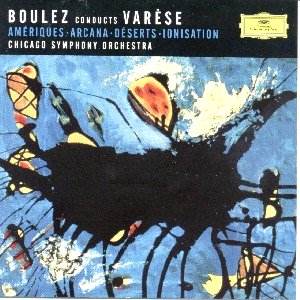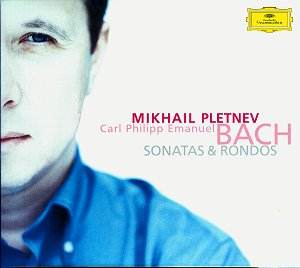 Recording Information:
Recording Information:
Composer: Edgar Varèse (1883-1965)
Works: Amériques (revised version 1927), Arcana (1927), Ionisation (1931), Deserts (1954)
Performers: Chicago Symphony Orchestra, conducted by Pierre Boulez
Recording Dates: December 1995 (Amériques & Ionisation), December 1996 (Arcana & Deserts)
Label: Deutsche Grammophon, DG 471 137-2
Duration: 68:21
In this compelling anthology of Edgar Varèse’s pioneering works, Pierre Boulez and the Chicago Symphony Orchestra illuminate the audacious soundscapes that define the composer’s legacy. Varèse, often hailed as a radical figure in the early 20th-century avant-garde, crafted a musical language that was both innovative and deeply reflective of the tumultuous cultural landscape of his time. This collection, with its array of striking compositions, serves not only as an introduction to Varèse’s oeuvre but also as a testament to the remarkable interpretative prowess of Boulez and his ensemble.
Historical Context and Musical Significance
Amériques, composed in 1921 and revised in 1927, marks Varèse’s first significant work written in the United States. It is a piece that wrestles with the modernity of urban life, drawing inspiration from the frenetic energy of New York City. The orchestration is strikingly ambitious, featuring a vast array of instrumental colors, including an expanded brass section that underscores the work’s monumental character. Boulez’s interpretation captures this essence with a fervor that is both visceral and precise. Notably, the climactic moment at the work’s zenith—the cacophonous blending of brass and percussion—exemplifies Varèse’s fascination with the concept of sound as a primary compositional element rather than a mere vehicle for melody.
Arcana, composed in 1927, showcases Varèse’s fascination with timbre and rhythm, developing through an organic evolution of sound rather than a strict adherence to traditional forms. Boulez’s handling of the intricate textures here is masterful; the contrasts in dynamics and the subtle interplay between sections demonstrate a deep understanding of the score’s sonic potential. The use of repetition in Arcana becomes a hypnotic force, a technique that Boulez emphasizes, allowing the listener to experience the piece’s kaleidoscopic shifts in a profoundly immersive manner.
Ionisation, composed in 1931, is a landmark composition that exclusively employs percussion instruments. Here, Boulez’s commitment to the score’s rhythmic complexity and timbral diversity shines through. The precision with which the Chicago percussionists execute the intricate patterns reflects Varèse’s innovative spirit and Boulez’s own legacy as a champion of contemporary music. This performance captures the exhilarating energy of the work, fulfilling Varèse’s vision of rhythm as a foundational element of musical discourse.
Deserts, completed in 1954, is often regarded as a culmination of Varèse’s interests in electronic sound and orchestral color. Boulez’s decision to omit the tape components is judicious; the orchestral fabric remains potent and vivid without the potentially dated electronic layers. The orchestration evolves seamlessly, with a cumulative power that encapsulates Varèse’s unique ability to blend avant-garde ideas with a sense of dramatic arc. The 17-minute journey through this work is marked by a sense of inevitability, as Boulez skillfully navigates the shifting landscapes of sound.
Performance and Recording Quality
The Chicago Symphony Orchestra under Boulez delivers performances that are both technically assured and deeply expressive. The clarity of the mid-1990s recordings allows the intricate dialogues between instruments to emerge with remarkable transparency. Individual lines are sharply defined; the brass and percussion sections, in particular, resonate with a thrilling brilliance that enhances the visceral impact of Varèse’s writing.
In comparison to other notable recordings, such as those conducted by Robert Craft or the more recent interpretations by François-Xavier Roth, Boulez’s approach is characterized by a blend of intellectual rigor and emotive power. While Craft’s recordings may offer a more historicist perspective, Boulez’s interpretations remain forward-looking, aligning with Varèse’s own progressive ethos.
Conclusion
This collection of Varèse’s seminal works, conducted by Pierre Boulez and performed by the Chicago Symphony Orchestra, stands out as an essential recording for anyone seeking to understand the intricacies of 20th-century music. The performances are not merely competent; they are galvanizing, drawing the listener into the very heart of Varèse’s innovative sound world. This recording is not just an introduction to Varèse; it is a compelling exploration of a composer who dared to redefine the parameters of music itself. For those who do not yet possess Varèse in their collection, this anthology is an excellent starting point, replete with sonic brilliance and interpretative depth.


